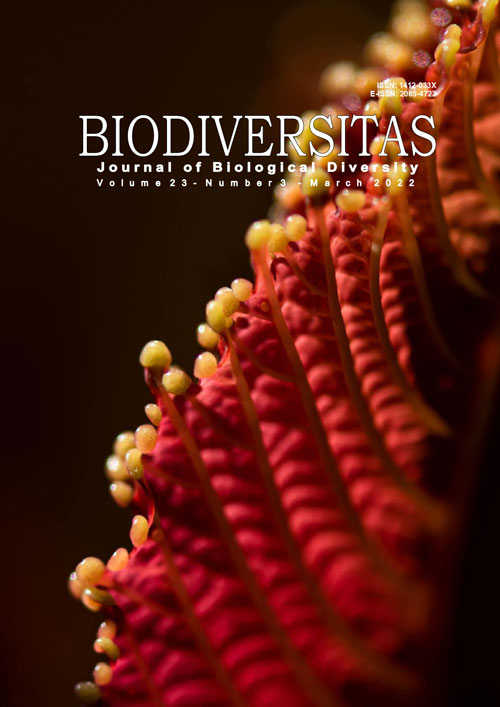Estimation of genetic parameters and heterosis through line × tester crosses of national sorghum varieties and local Indonesian cultivars
##plugins.themes.bootstrap3.article.main##
Abstract
Abstract. Rachman F, Trikoesoemaningtyas, Wirnas D, Reflinur. 2022. Estimation of genetic parameters and heterosis through line × tester crosses of national sorghum varieties and local Indonesian cultivars. Biodiversitas 23: 1588-1597. Diverse gene sources possessed by local sorghum cultivars are potentially useful for superior varieties development. This study aimed to determine the genetic parameters and heterosis of sorghum lines derived from national varieties and local cultivars crosses. A total of eight F1 hybrids derived from line × tester mating design with four lines (PI-150-20A, Soraya 3 IPB, Kawali, Bioguma 1 Agritan) and two testers (Pulut 3 and Pulut 5) were used in the present study. This experiment was arranged in a randomized complete block design (RCBD) with three replications. Results showed that several agronomical important traits, such as plant height, leaf number, days to flowering, days to harvesting, panicle length, panicle diameter, and 1000-grain weight were significantly affected by additive gene action, while others by non-additive gene action. Based on field observation, three out of six parental lines showed the best performance of grain yields traits. Of these, Soraya 3 IPB × Pulut 5 and Bioguma 1 Agritan × Pulut 5 crosses were the best cross combination showing high values for both combining ability and heterosis parameters. These findings would help breeders to determine the selection methods for desirable traits and cross combinations to develop a new variety with high yield performance.

